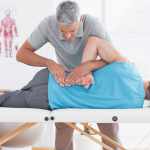Patients visiting a chiropractor usually don’t know much about this treatment. They know that skilled professionals are doing something back there; it can be a bit unpleasant, and sometimes they hear cracking, but they feel much better afterward.
Although chiropractors can really do wonders and repair your spine, it’s not because of their healing hands or science beyond this treatment. It’s about the techniques they use. And how the treatment will be tailored to the patient, depends primarily on the condition treated.
Table of Contents
Hand-on Techniques
The use of hands has been the essence of chiropractic care for thousands of years. With the advancement of medicine and diagnostics, experts in this field have been able to advance the techniques used in this treatment, all for the sake of more effective results. However, most chiropractic clinics still rely on hand manipulation methods. Varieties are Gonstead and Diversified technique.
The point is to bring the large joints in the body in alignment, using hand pressure. Most problems of the musculoskeletal system arise precisely from the stiffness of the joints and their dislocation.
The spine often ‘pops out of line.’ The resulting pain is a warning symptom that the surrounding tissues are suffering and that there is a risk of developing certain diseases. The spinal manipulation is a whole set of movements that experienced chiropractors use to get the spine back in align. Disorders caused by bad posture, too much sitting, improper standing, or physical injury, require the focus of chiropractor on the lower spine or pelvis.
The feeling of relief may sometimes be instantaneous, but there is still no scientific evidence that this technique affects the cause of the disease. Therefore, it is best to combine chiropractic care with conventional treatment methods.
Decompression Manipulation
Spinal decompression or flexion distraction as a therapeutic method is the stretching of certain parts of the body using mechanical force. In the case of chiropractors, they use bare hands. Knowing where to place the palm, they perform the movements to get maximum effect with optimal force.
The goal of proper stretching is to enlarge the space between vertebras, to improve circulation in the spine area as soon as possible. Compression of vertebras occurs due to gravity, but this can be prevented by regular physical activity and strengthening of the back muscles.
Stretching leads to unblocking of the intervertebral joints, lengthening of the ligaments, and spreading of the muscles. This method successfully treats a condition known as a herniated disc, which you can read more about on this source.
Drop Table
All chiropractic methods are applied in the lying position. With Thompson, or Drop Table, technique, the patient lies on a specially designed drop-piece table. It has a soft surface covered with anatomical pads. Their role is to reduce the fraction and increase the motion force that results from the movement of the chiropractor’s hand.
Although the ‘youngest’ method, the Drop Table technique is widely used in clinics, especially to treat athletes. Chiropractors don’t apply it just for spine adjustment, but also to treat torso, shoulder girdle, or extremity fractures resulting from the injuries.
Also Read: Catchy Benefits of Strength Training Program
Technique with Instruments

Chiropractic technique that requires a specialized instrument is known as the Activator method, because of the device used in its application. According to the best chiropractors, there is no significant difference with the hand-on techniques, except that the activator replaces physical force.
The point is in directional low-power electrical impulses that treat a variety of conditions – from lower back pain to migraines. By activating mechanoreceptors along the spine, the device produces enough power to move the vertebra without causing discomfort or pain to patients. The patient feels it as a slight vibration or thumping.
The chiropractor will determine, by a simple comparison of the leg length, which vertebra is dislocated and will direct the activator to that spot and surrounding area. They usually perform this technique while patients are sitting, for better attainability of painful area.
Regardless of the relief after visiting a chiropractor, it should boost the initial impulse in the healing process. Before each treatment, a safe diagnosis must be made so that the experts know what technique to use and what problem to focus on.







